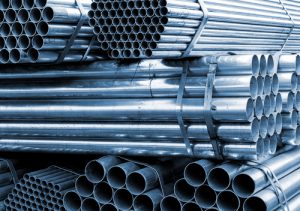
U.S. Sen. Rob Portman (R-OH) and a bipartisan contingent want to end steel overcapacity and its underlying causes, which are primarily government intervention and market-distorting practices, particularly by China.
Sen. Portman and several colleagues in a recent letter sent to U.S. Trade Representative (USTR) Robert Lighthizer asked him to prioritize the extension of the mandate of the Global Forum on Steel Excess Capacity, created in 2016 by the Organization for Economic Co-operation and Development to promote diplomatic engagement on the subject of steel overcapacity.
“We believe the Global Forum represents a helpful tool in the fight against global steel overcapacity,” Sen. Portman and the other senators wrote.
According to their letter, the Global Forum on Steel Excess Capacity creates opportunities for the United States to organize coalitions of like-minded states “to make clear to systemic overproducers that their trade-distorting policies and practices are contrary to the commitments those countries have made to the multilateral trading system.”
Additionally, the forum plays a key role in data collection and analysis, such as its successful efforts to secure information on capacity at individual mills, the members wrote.
“While we recognize that diplomacy is not a substitute for vigorous trade enforcement, we do believe that the Global Forum continues to have an important role to play,” they wrote. “We believe it is important to maintain multilateral engagement to help solve this problem.”
Sen. Portman and his colleagues are particularly concerned about China, which they noted has made new investments in steel capacity by building new steel mills outside of the country.
“Chinese steel production has increased by an additional nine percent so far this year, and now accounts for 53 percent of global steel production,” according to their letter. “Clearly, there is still much work to be done to reform the market-distorting government policies that are driving this continuing increase in capacity and production.”



